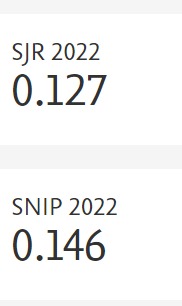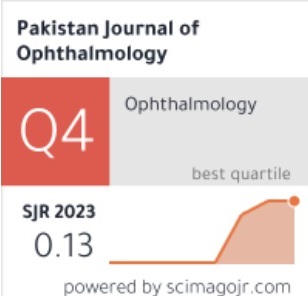Comparison of High Intensity Accelerated Corneal Cross Linking Protocols in Treatment of Progressive Keratoconus;
Doi: 10.36351/pjo.v36i2.976
DOI:
https://doi.org/10.36351/pjo.v36i2.976Keywords:
Corneal Cross Linking, Accelerated Protocols, Progressive KeratoconusAbstract
Purpose: To compare the safety and efficacy of Accelerated Corneal Cross Linking (AXL) protocols ,9mW/cm2 for 10 min with 18mW/cm2 for 5 min in terms of refractive and topographic keratometric indices in patients with progressive keratoconus over 3, 6, 12 and 18 months follow-up.
Study Design: Quasi experimental study.
Place and Duration of Study: Armed Forces Institute of Ophthalmology Rawalpindi Pakistan, from Nov 2016 to Jun 2018.
Material and Methods: Sixty eyes, 30 in each group, of 55 consecutive patients diagnosed with progressive keratoconus were enrolled through convenience sampling and were subjected to AXL with irradiance protocols of 18 watt/cm2 for 5 minutes in group 1 and 9mwatt/cm2 for 10 minutes in group 2. All patients underwent a comprehensive ophthalmic examination at baseline and postoperative follow up visits at 3, 6, 12 and 18 months. Primary outcome parameter was disease stability defined as increase in maximum keratometry over baseline K max of no more than 1 diopter at 1 year after AXL. Statistical analysis of data was performed with IBM SPSS software (version 20.0 SPSS). P value of < 0.05 was considered as statistically significant.
Results: Disease stability was 96 % in each group. At the final time point of 18 months, group 2 (AXL 9mmwatt/cm2 for 10 min) was superior as compared to group 1 (AXL 18mmwatt/cm2 for 5 min) in terms of flattening of steep and sim K (p = 0.007, 0.023 respectively).
Conclusion: The two AXL protocols are safe and appear to show comparable efficacy in disease stability. They can be used alternatively in the treatment of progressive keratoconus.






